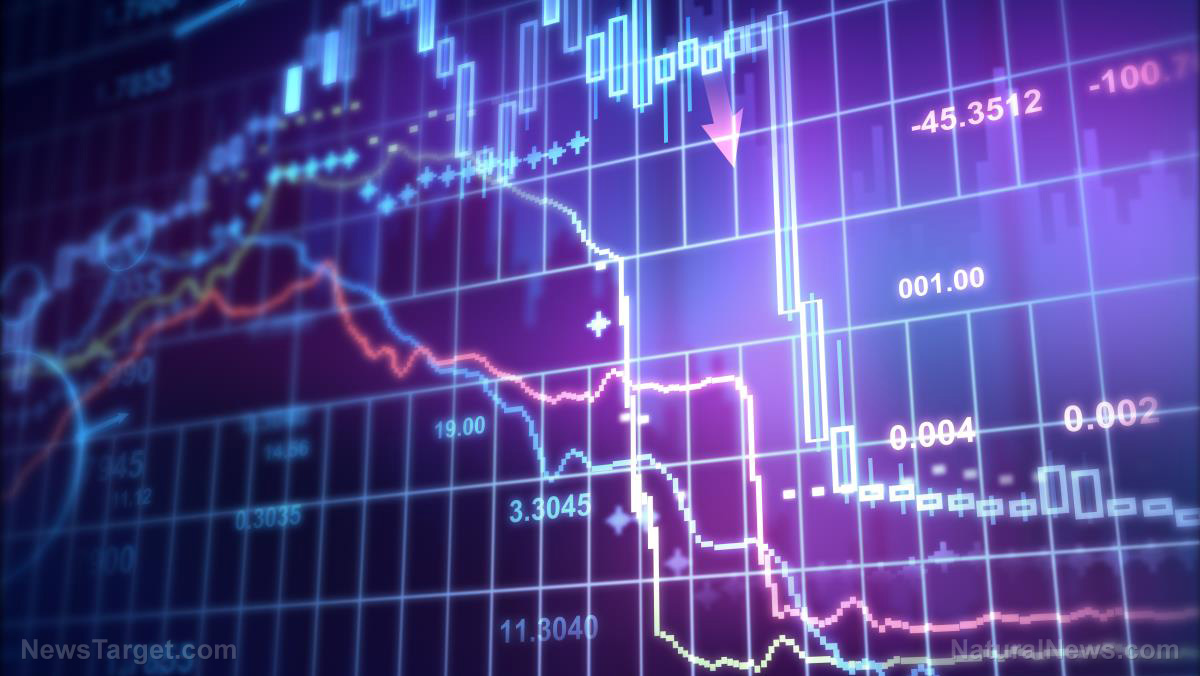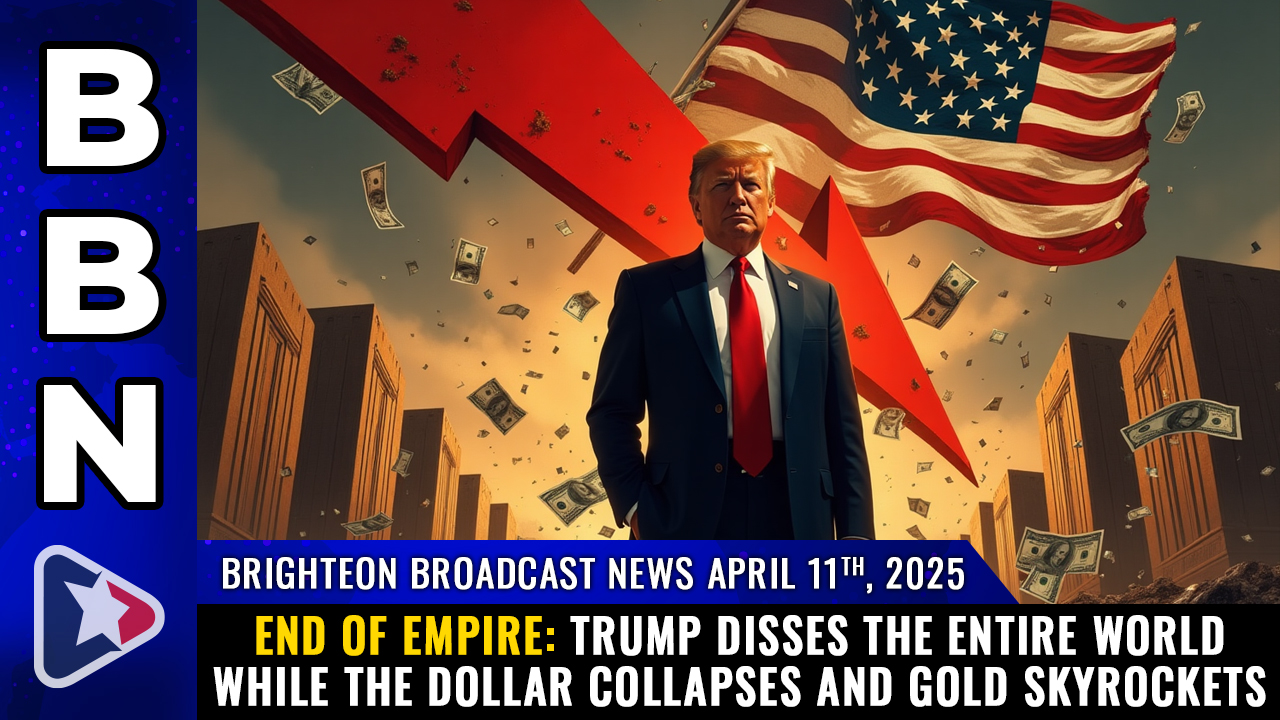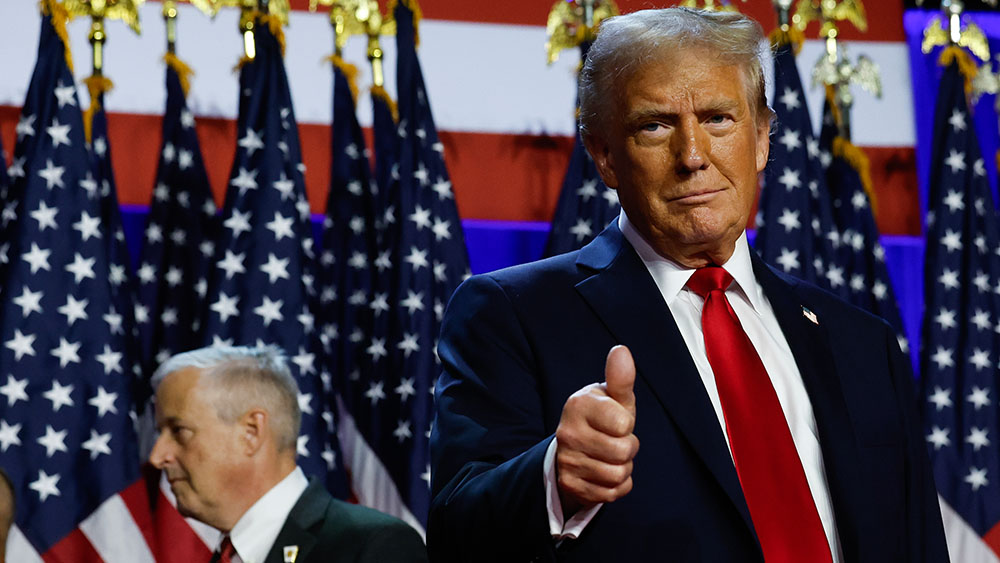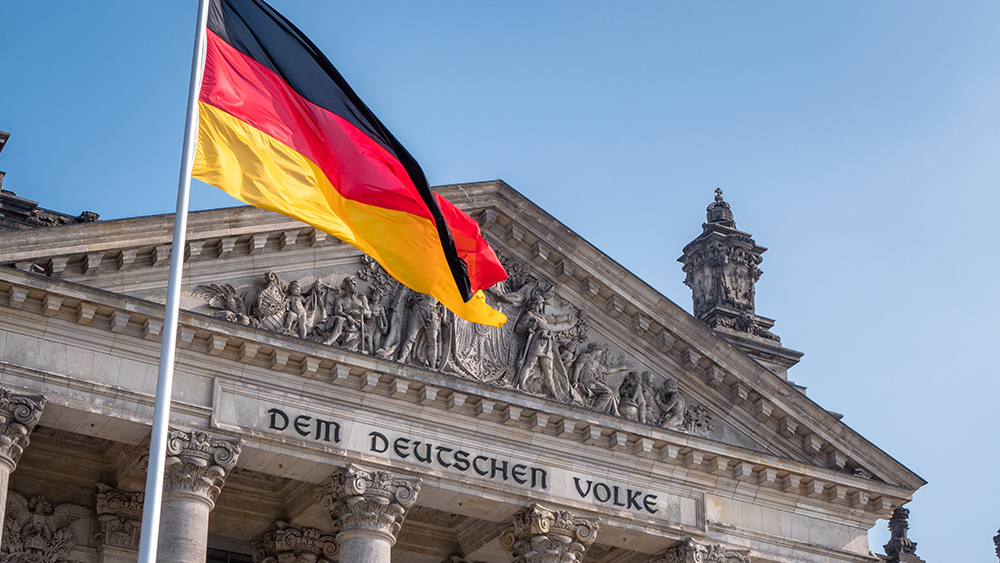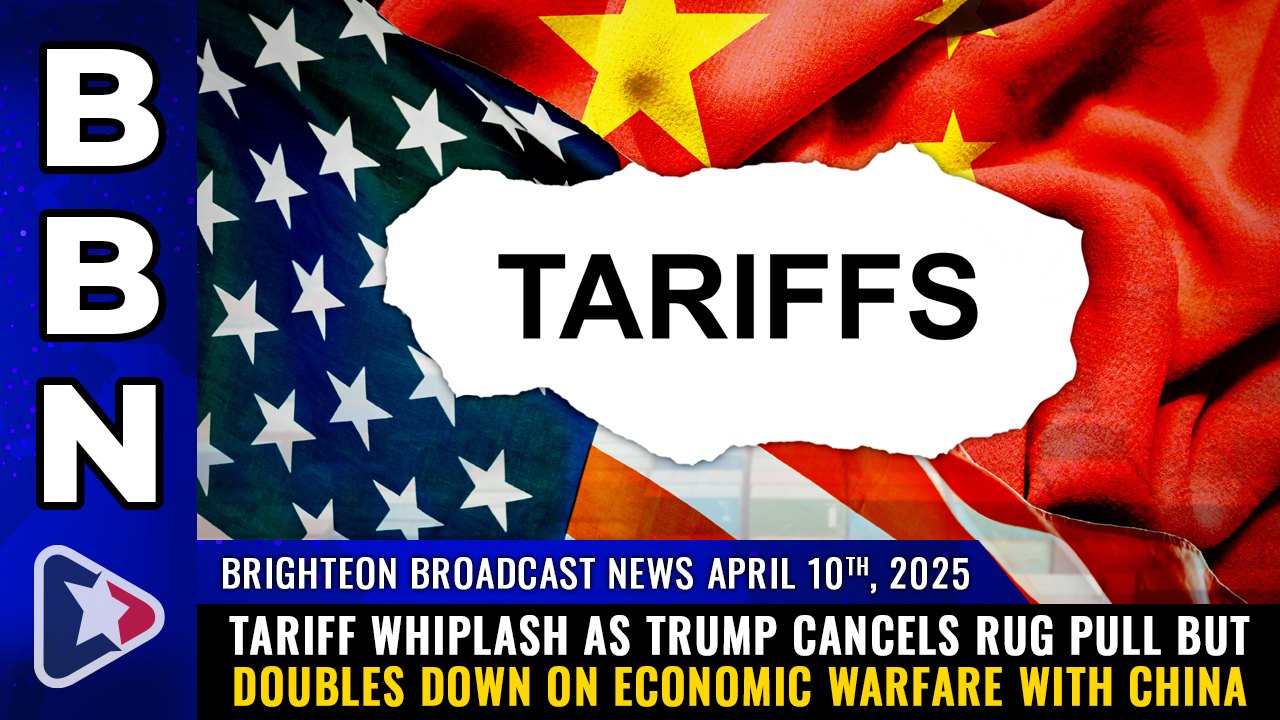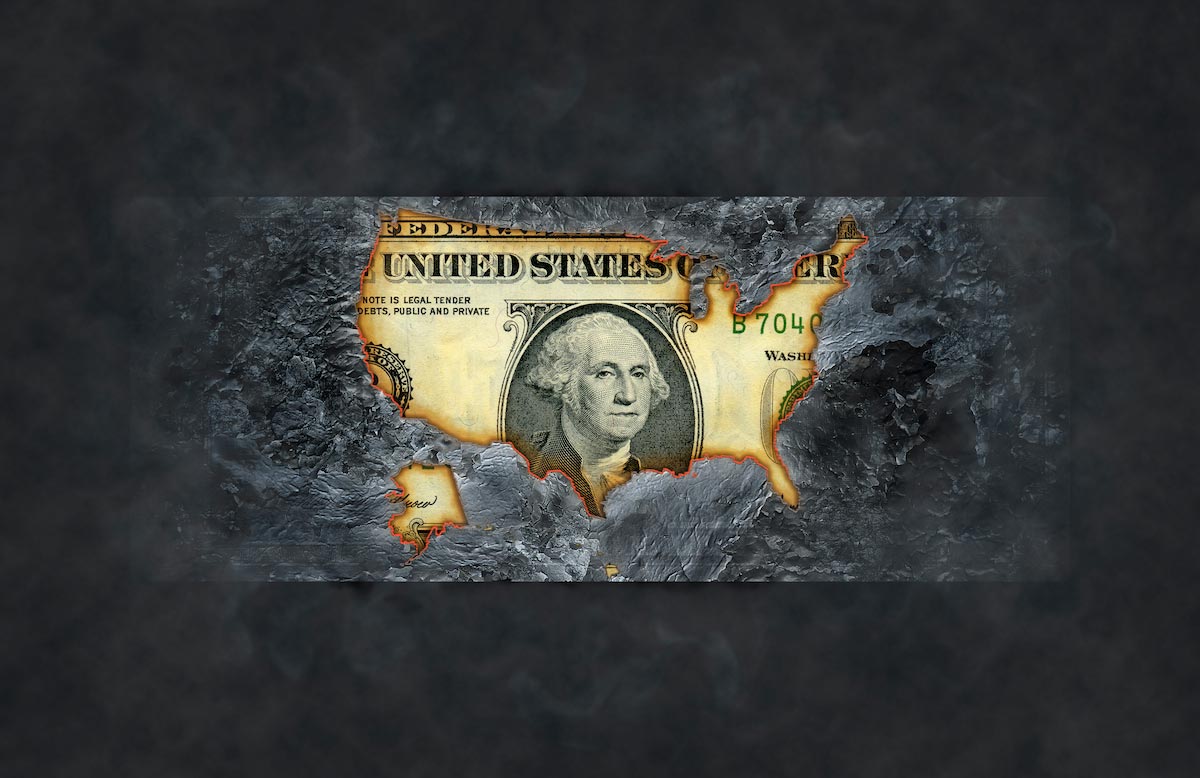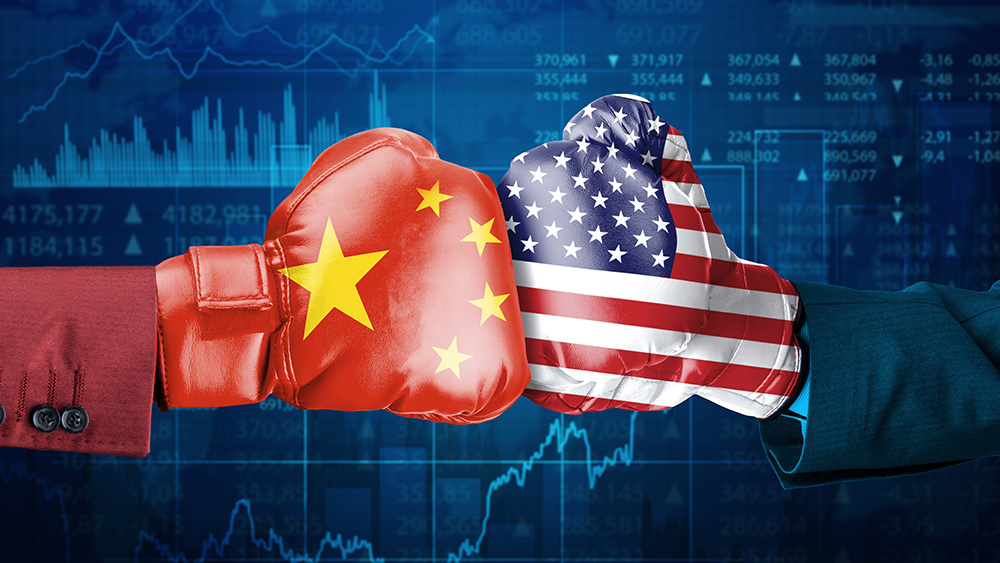Bitcoin stays steady amid global market chaos
04/09/2025 / By Willow Tohi

- Despite President Donald Trump’s sweeping tariffs triggering steep declines in the S&P 500 and Nasdaq, Bitcoin remained stable, even briefly hitting 79,000, while gold’s safe-haven appeal lagged.
- The 10% baseline U.S. import tariff (with higher rates for China and the EU) spurred fears of stagflation, causing equities to plummet—yet Bitcoin showed weak correlation with traditional assets, indicating growing independence.
- While institutional investors still favor gold over Bitcoin (58% vs. 3%) in trade wars, long-term Bitcoin holders are accumulating, testing its viability as a non-sovereign safe haven amid economic turmoil.
- With inflation expectations at 5%, the Fed faces a dilemma—rate cuts could boost Bitcoin as “inflation-resistant money,” but prolonged stagflation may undermine crypto’s appeal.
- Historical parallels to 1930s protectionism raise concerns, but if Bitcoin maintains its decoupling from equities, it could solidify its role as a unique asset class—even as CBDCs and global trade weakening add further complexity.
As global markets experience unprecedented upheaval due to President Donald Trump’s sweeping tariffs, Bitcoin (BTC) is defying expectations and holding steady, even briefly topping 79,000. This unexpected resilience stands in stark contrast to the steep declines in the S&P 500 and Nasdaq, which have tumbled over 10% since April 2. It has also surpassed the hesitant performance of gold, the traditional safe-haven asset. The divergence highlights a pivotal moment for cryptocurrencies as they navigate a resurgence of protectionist policies not seen since the 1930s.
The tariff shockwave
On April 2, President Trump imposed a 10% baseline tariff on all U.S. imports, layered with higher rates targeting specific nations like China (34%) and the EU (20%). These measures, framed as reciprocal trade corrections, sent shockwaves through global markets. Within days, retaliatory tariffs from trading partners escalated fears of stagflation—a scenario where inflation persists alongside stagnant growth. The S&P 500 and Nasdaq plunged into correction territory, while gold, despite hitting record highs, failed to attract the same fervor as Bitcoin.
“Bitcoin has shown signs of resilience, rebounding even as traditional risk assets faltered,” noted Binance Research in an April 7 report. The analysis revealed that Bitcoin’s 90-day correlation with equities (0.32) and gold (0.12) remains weak, suggesting an evolving independence from macroeconomic tides.
A test for Bitcoin’s “safe haven” narrative
Historically, Bitcoin’s price swings have mirrored stock market volatility, but its recent stability amid equity sell-offs has intrigued analysts. Long-term Bitcoin holders have increased their positions, signaling confidence despite the turmoil. “The key question is whether BTC can return to its long-term pattern of low correlation with equities,” Binance’s report observed.
However, institutional investors remain skeptical. A Bank of America survey found 58% of fund managers still prefer gold during trade wars, versus just 3% for Bitcoin. “Market participants are watching to see if BTC retains its appeal as a non-sovereign asset in a protectionist economy,” Binance added.
Inflation, Fed policy and crypto’s tightrope
The tariffs have injected fresh uncertainty into monetary policy. With inflation expectations spiking to 5%, the Federal Reserve faces a dilemma: cut rates to spur growth or maintain higher rates to combat inflation. Fed Chair Jerome Powell acknowledged the challenge on April 4, stating the tariffs’ economic effects “will need to be closely monitored.”
Bitcoin’s performance may hinge on this balance. If the Fed pivots to rate cuts, said Binance, BTC could attract buyers as “inflation-resistant money.” However, prolonged stagflation could dampen crypto’s appeal.
Historical parallels and future risks
The current tariff levels—averaging 18.8%, nearing 1930s-era peaks—risk repeating the mistakes of the Smoot-Hawley Act, which worsened the Great Depression. For crypto, the stakes are high. A protracted trade war could “dry up retail flows and slow institutional adoption,” warned Binance. Yet if Bitcoin sustains its decoupling from stocks, it may cement its status as a unique asset class.
Global economic impact and alternative scenarios
The tariff-induced economic stress is not confined to the U.S. Global trade volumes have already begun to decline, affecting export-dependent economies such as Germany and South Korea. The International Monetary Fund (IMF) revised its global growth forecast downward, citing the tariff escalation as a major factor. In such a volatile environment, the appeal of decentralized, borderless assets like Bitcoin becomes more pronounced.
Moreover, the rise of digital currencies issued by central banks (CBDCs) is another wildcard in this scenario. Countries like China are accelerating their CBDC initiatives, potentially altering the global financial landscape and challenging the dominance of fiat currencies. Bitcoin, as a non-sovereign, decentralized currency, could position itself as a hedge against the uncertainty brought by these new financial instruments.
A defining moment
Bitcoin’s resilience amid market chaos offers a glimpse into its potential future—one less tethered to traditional finance. However, with gold still dominating as a safe haven and stagflation looming, the cryptocurrency must navigate a precarious path. As trade tensions escalate, Bitcoin’s next moves could determine whether it becomes a lasting hedge or remains a volatile outlier in a fracturing global economy. The coming months will be crucial in defining Bitcoin’s role in the new economic order.
Sources include:
Submit a correction >>
Tagged Under:
Binance, bitcoin, CBDC, crypto cult, economy, Globalism, gold, market crash, money supply, pensions, risk, stocks
This article may contain statements that reflect the opinion of the author
RECENT NEWS & ARTICLES
COPYRIGHT © 2018 PANIC.NEWS
All content posted on this site is protected under Free Speech. Panic.news is not responsible for content written by contributing authors. The information on this site is provided for educational and entertainment purposes only. It is not intended as a substitute for professional advice of any kind. Panic.news assumes no responsibility for the use or misuse of this material. All trademarks, registered trademarks and service marks mentioned on this site are the property of their respective owners.

